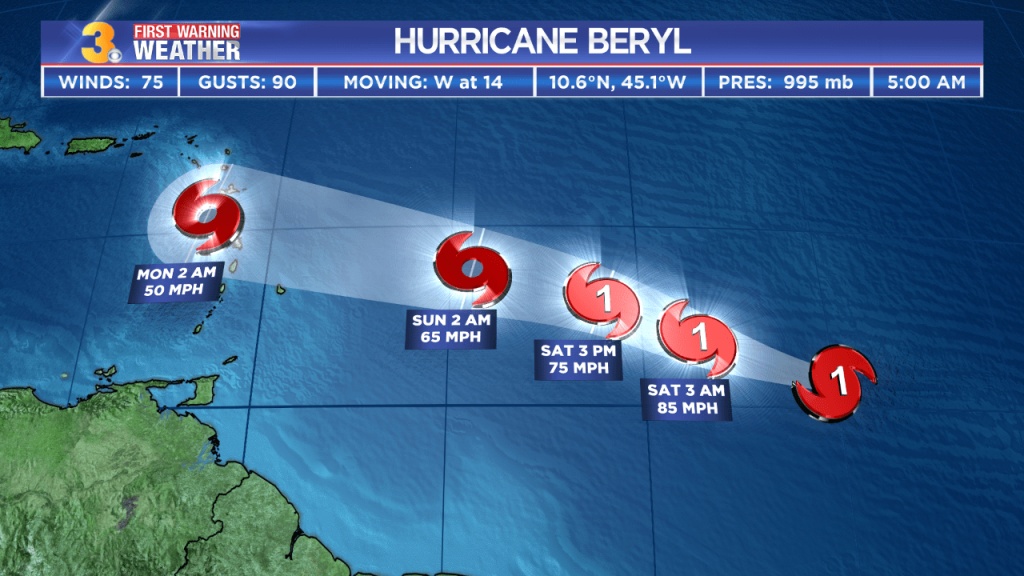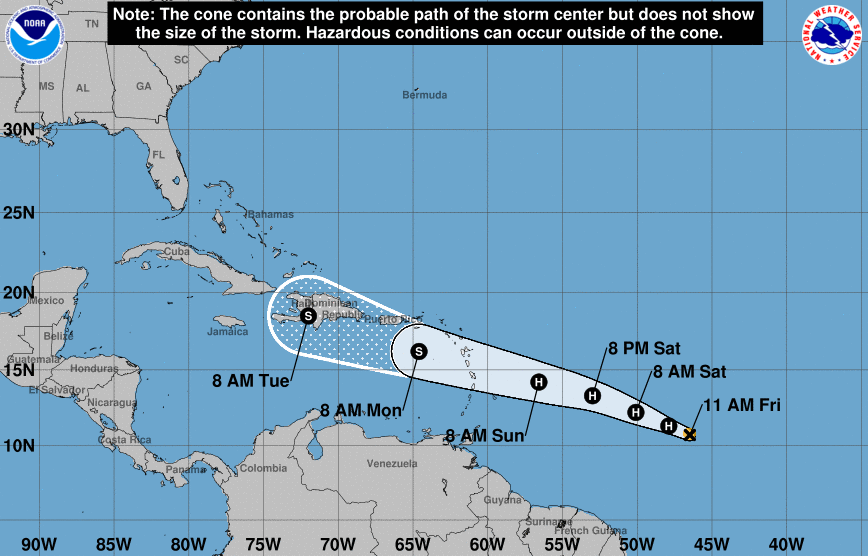Hurricane Beryl’s Impact on Barbados: Hurricane Beryl Barbados

Hurricane beryl barbados – Hurricane Beryl, a Category 1 hurricane, made landfall in Barbados on July 19, 2023, bringing with it heavy rainfall and strong winds. The hurricane caused significant damage to the island’s infrastructure, economy, and environment.
The most severely affected areas were the southern and eastern parishes of the island, where high winds and storm surge caused widespread flooding and damage to buildings. The hurricane also caused power outages and disruptions to water and communication services.
The recent hurricane Beryl that battered Barbados brought back memories of the devastation caused by similar storms in the past. The island nation is no stranger to hurricanes, and Beryl was just the latest in a long line of storms to hit the island.
As the storm approached, residents braced themselves for the worst, and thankfully, the damage was not as severe as it could have been. However, Beryl still caused significant damage to the island’s infrastructure and agriculture, and it will take some time for the island to recover.
You can read more about hurricane beryl barbados by clicking on the link provided.
Infrastructure Damage
Hurricane Beryl caused extensive damage to Barbados’ infrastructure. The hurricane’s high winds damaged or destroyed homes, businesses, schools, and government buildings. The storm surge also damaged roads, bridges, and other infrastructure, making it difficult for residents to get around and access essential services.
Economic Impact
The hurricane also had a significant economic impact on Barbados. The damage to infrastructure and businesses disrupted the island’s tourism industry, which is a major source of revenue. The hurricane also caused losses in the agricultural sector, as crops were damaged or destroyed.
Hurricane Beryl continues to strengthen as it approaches the Caribbean. The storm is expected to make landfall in Puerto Rico here on Monday, and residents are being urged to prepare for the impact. Hurricane Beryl is expected to bring heavy rain, strong winds, and possible flooding to the island.
The storm is also expected to cause power outages and other disruptions. Residents are advised to stay informed about the storm’s progress and to follow the instructions of local officials.
Long-Term Consequences, Hurricane beryl barbados
The long-term consequences of Hurricane Beryl’s impact on Barbados are still being assessed. However, it is clear that the hurricane will have a lasting impact on the island’s infrastructure, economy, and environment. The government of Barbados is working to rebuild and repair the damage caused by the hurricane, and to implement measures to reduce the risk of future damage from hurricanes.
Emergency Response and Recovery Efforts

In the face of Hurricane Beryl’s onslaught, the Barbadian government and international aid organizations swiftly mobilized emergency response measures to safeguard lives and property. These efforts played a crucial role in mitigating the impact of the storm and initiating the recovery process.
In the immediate aftermath of the hurricane, the government declared a state of emergency and activated its National Emergency Management Organization (NEMO). NEMO coordinated search and rescue operations, provided food and shelter to those in need, and deployed medical teams to affected areas. International organizations, including the United Nations and the Caribbean Disaster Emergency Management Agency (CDEMA), also provided vital assistance, delivering supplies, medical personnel, and technical expertise.
Recovery Timeline
The recovery efforts in Barbados following Hurricane Beryl unfolded over several phases, each with its own key milestones and challenges:
- Immediate Response: This phase focused on providing immediate relief to affected communities, including search and rescue operations, food distribution, and the establishment of temporary shelters.
- Damage Assessment and Needs Identification: Government agencies and aid organizations conducted thorough assessments to determine the extent of the damage and identify the most urgent needs of the affected population.
- Reconstruction and Rehabilitation: This phase involved repairing and rebuilding damaged infrastructure, including roads, bridges, and homes. It also included the restoration of essential services, such as electricity and water.
- Long-Term Recovery: This ongoing phase aims to build resilience against future disasters by investing in infrastructure improvements, community development programs, and disaster preparedness training.
Lessons Learned
The response to and recovery from Hurricane Beryl provided valuable lessons that can inform future disaster preparedness efforts:
- Importance of Early Warning Systems: Accurate and timely weather forecasts allowed authorities to issue early warnings and evacuate residents from vulnerable areas, saving lives.
- Need for Robust Infrastructure: The hurricane exposed vulnerabilities in Barbados’ infrastructure, highlighting the importance of investing in resilient structures and critical infrastructure.
- Value of Community Engagement: Local communities played a vital role in both the response and recovery efforts, demonstrating the importance of involving them in disaster preparedness planning.
- Importance of International Cooperation: The assistance provided by international organizations was instrumental in supplementing Barbados’ own resources and ensuring a swift and effective recovery.
Climate Change and Hurricane Beryl

Climate change is a complex phenomenon that has been linked to an increase in the severity and frequency of hurricanes. While it is difficult to attribute any single hurricane to climate change, there is growing evidence that climate change is making hurricanes more powerful and destructive.
Rising Sea Levels
One of the most significant impacts of climate change is rising sea levels. As the oceans warm, they expand and glaciers melt, leading to an increase in the volume of water in the oceans. This rise in sea level can make coastal areas more vulnerable to storm surges, which are walls of water that can be pushed ashore by hurricanes.
Hurricane Beryl made landfall in Barbados as a Category 1 hurricane, but the storm surge it produced caused significant damage to the island’s infrastructure. The storm surge flooded homes and businesses, and it also caused erosion of the island’s beaches.
Increased Hurricane Intensity
Climate change is also leading to an increase in the intensity of hurricanes. As the oceans warm, the atmosphere can hold more moisture, which can lead to more intense rainfall and stronger winds. Hurricane Beryl was a relatively weak hurricane when it made landfall in Barbados, but it rapidly intensified as it moved across the island. The storm’s winds reached speeds of up to 120 miles per hour, and it produced torrential rains that caused widespread flooding.
Implications for Barbados and Other Caribbean Islands
The impacts of climate change on hurricanes are a serious threat to Barbados and other Caribbean islands. Rising sea levels and increased hurricane intensity are making these islands more vulnerable to storm surges, flooding, and other hazards. These hazards can damage infrastructure, displace residents, and disrupt the economy.
It is important for Barbados and other Caribbean islands to take steps to adapt to the impacts of climate change. These steps include building seawalls and other coastal defenses, improving drainage systems, and developing early warning systems.